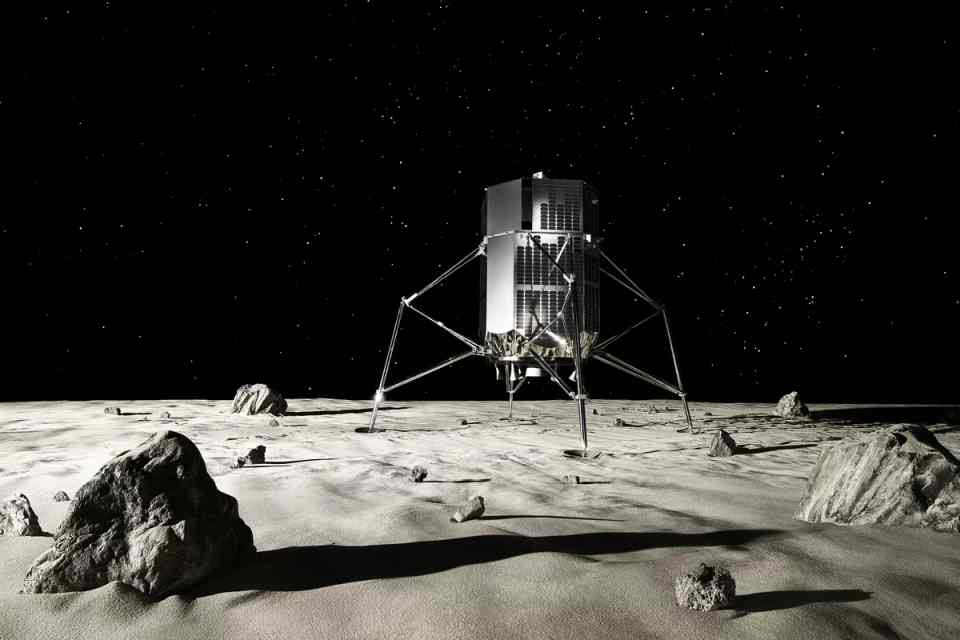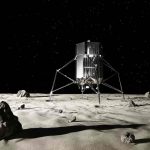Draper teams up with ispace, General Atomics, and Spaceflight Industries to build the next lunar landers for NASA

NASA is returning to the Moon with commercial and international partners as part of an overall agency Exploration Campaign in support of Space Policy Directive 1. It all starts with robotic missions on the lunar surface, as well as a Lunar Orbital Platform-Gateway for astronauts in space beyond the Moon.
Draper, a company with spaceflight legacy and heritage in space exploration dating to the Apollo moon landings, yesterday unveiled its team for NASA’s Commercial Lunar Payload Services (CLPS) contract. Under the proposal the team will support NASA in the delivery of small rovers and instruments to meet lunar science and exploration needs, advance development of lunar landers for human missions and conduct more research on the moon’s surface ahead of a human return. Draper, as prime contractor, will lead a team that brings extensive and highly relevant experience in space, with partners which include General Atomics Electromagnetic Systems, ispace and Spaceflight Industries. NASA plans to spend up to $2.6 billion over the next 10 years on the contracts.
Founded in 1932 by Charles Stark Draper at the Massachusetts Institute of Technology (MIT) to develop aeronautical instrumentation. Draper, originally the MIT Instrumentation Laboratory, the company designed the systems needed for spacecraft guidance and navigation during the Apollo missions to the Moon. It was renamed for its founder in 1970 and separated from MIT in 1973 to become an independent, non-profit organization. Draper is known for the design and development of the Apollo Guidance Computer that guided the Apollo astronauts to the Moon and back safely to Earth, every time.
Seamus Tuohy, principal director of space systems at Draper, remarked, “Draper is proud of its long-standing relationship with NASA, and is excited to further strengthen that partnership with a team that will provide commercial lunar launch transportation and lunar landers and re-establish the moon as a destination for future human spaceflight. As the nation prepares to celebrate the 50th anniversary of the first Apollo lunar landing, Draper is excited to partner once again with NASA to go to the moon, this time joined by a dream team of space industry leaders.”
NASA announced its CLPS program in December 2017 and invited commercial partners to form teams to bid on the project. At the time the space agency said it is returning to the moon and to destinations farther into the solar system with commercial and international partners as part of an overall agency Exploration Campaign in support of Space Policy Directive 1.
In accordance with the terms of the proposal, Draper will provide payload operations and the guidance, navigation and control systems for the lunar lander, as well as overall management and coordination of the team; General Atomics Electromagnetic Systems is responsible for carrying out the lunar lander manufacturing, assembly, integration and testing in the United States; ispace will act as the design agent for the lunar lander and mission operations, as well as provide high-frequency rideshare opportunities; and Spaceflight Industries Inc. is responsible for launch services including integration, mission management, launch and range documentation and pre- and post-operations.
“We have decades of experience manufacturing complex systems and components supporting a variety of critical programs and multi-year, multi-customer, and multi-contractor teaming environments,” stated Scott Forney, president of General Atomics Electromagnetic Systems. “As a proud member of this highly qualified international team, we look forward to applying our manufacturing and satellite design expertise to deliver a CLPS spacecraft supporting NASA’s next mission to the moon.”
“NASA’s CLPS is a very important program that paves the way for establishing a commercial lunar transportation market. We are very much looking forward to supporting NASA in that effort,” said ispace’s founder and chief executive, Takeshi Hakamada, who was inspired to start ispace while studying Aerospace Engineering at Georgia Tech. “We are honored that Draper selected our lunar lander technology as the most capable design and to join this truly outstanding team led by Draper, which brings together the talent and capabilities necessary to support NASA’s return to the Moon.”
Curt Blake, president of Spaceflight, said, “We’re focused on getting our customers’ spacecraft into orbit in the most expeditious, cost-effective manner possible. We are honored and looking forward to working on this NASA moonshot with the team.”
In support of the national interest, NASA has mandated that the prime contractor provide a CLPS that uses domestic end products for all space transportation vehicles required for performance of the contract. Draper and the team prepared the proposal with that goal in mind and to satisfy the requirements of NASA’s Domestic Source Certification.

